If you want PCIe Gen4, HPE ProLiant can now deliver that in what the company is calling its “Gen10 Plus” series. PCIe Gen4 effectively doubles the data rate for PCIe lanes in server over Gen3 which means faster storage, networking, and accelerator interfaces. The HPE ProLiant DL325 Gen10 Plus and ProLiant DL385 Gen10 Plus servers are the first in HPE’s portfolio to offer the new interface. We recently published our HPE ProLiant DL325 Gen10 Review which was a platform designed around the first generation AMD EPYC platform. The “Plus” in the model name denotes not just a simple update to PCIe Gen4, instead it denotes what is a serious overhaul of the platform. We saw the AMD EPYC 7002 series equipped servers at Supercomputing 2019 in Denver and can show off some of the key features.
HPE ProLiant DL325 Gen10 Plus
With the original ProLiant DL325 Gen10, one had a single set of drives in front limiting storage in this 1U platform. With the ProLiant DL325 Gen10 Plus, one can have one, two, or three sets of drives. As an example, the system we saw at SC19 has 28x 2.5″ SFF drive bays. This type of drive bay solution HPE offers in Xeon platforms, now it is coming to AMD EPYC. It greatly increases the versatility of the platform, but the changes do not stop there.
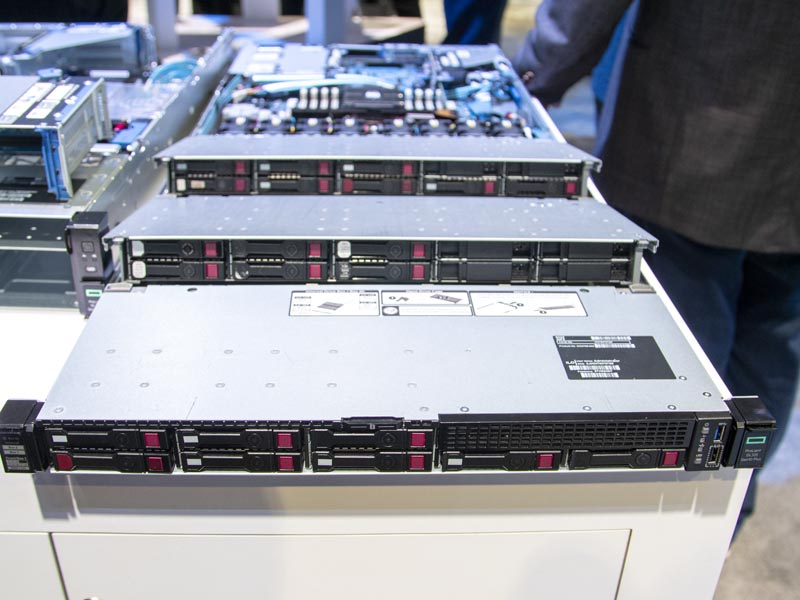
Inside the server, one can see the same AMD EPYC socket, with 16 DDR4 DIMM slots. HPE now supports DDR4-3200 with the EPYC 7002 series as well. You will also notice along the left of this photo that the SmartArray SAS solution now sits next to the CPU. That frees up extra expansion card room in the rear of the chassis.
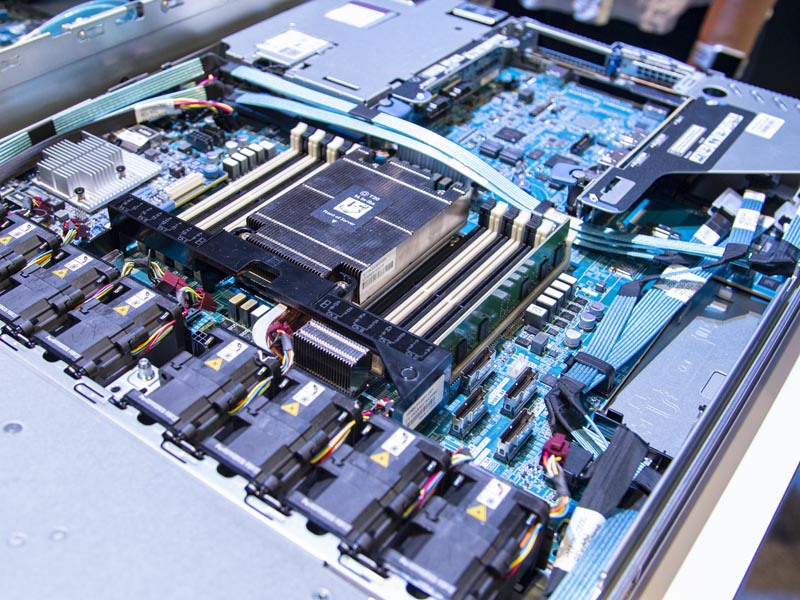
The I/O expansion area has changed quite a bit as well. One can see risers for up to three expansion cards. One also has the dedicated SmartArray mezzanine slot.
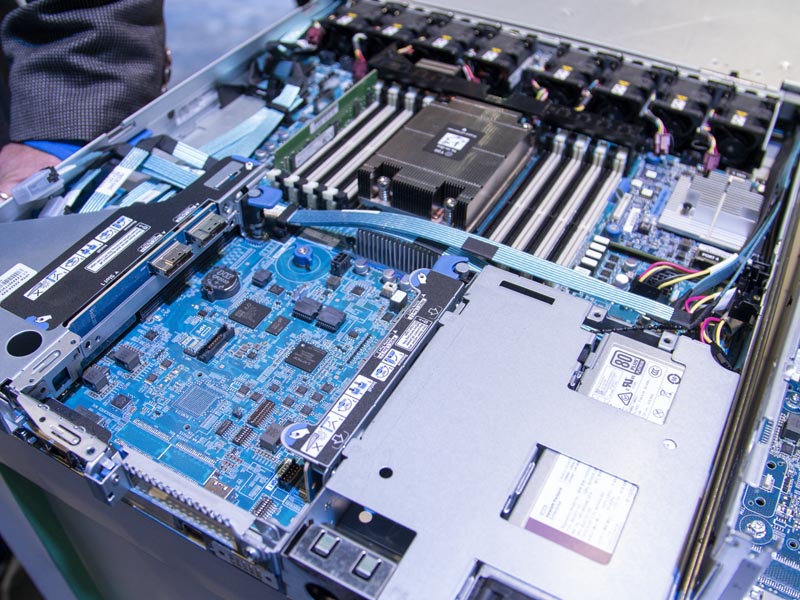
PCIe Gen4 is the key feature here. HPE needed to move to a higher-quality PCB material throughout the system to ensure signal integrity. That adds cost, but it is also an enabler. With PCIe Gen4 one can use a 200GbE NIC or run a 100GbE dual-port NIC at full speed on both ports with a PCIe Gen4 x16 slot. That is not possible on a PCIe Gen3 x16 platform. This is one of the biggest advantages of the AMD EPYC 7002 series platform from HPE. There is also a big change to the networking option for the new Gen10 Plus series that we are going to focus on with the DL385 Gen10 Plus.
HPE ProLiant DL385 Gen10 Plus
The HPE ProLiant DL385 Gen10 is the company’s 2U generation update. HPE claimed that it can fit dozens of 2.5″ SFF drives not just by using the front storage. Some configurations will swap heatsinks on the two AMD EPYC 7002 series CPUs and the airflow guide for additional internal storage allowing for over 30 drives in 2U.
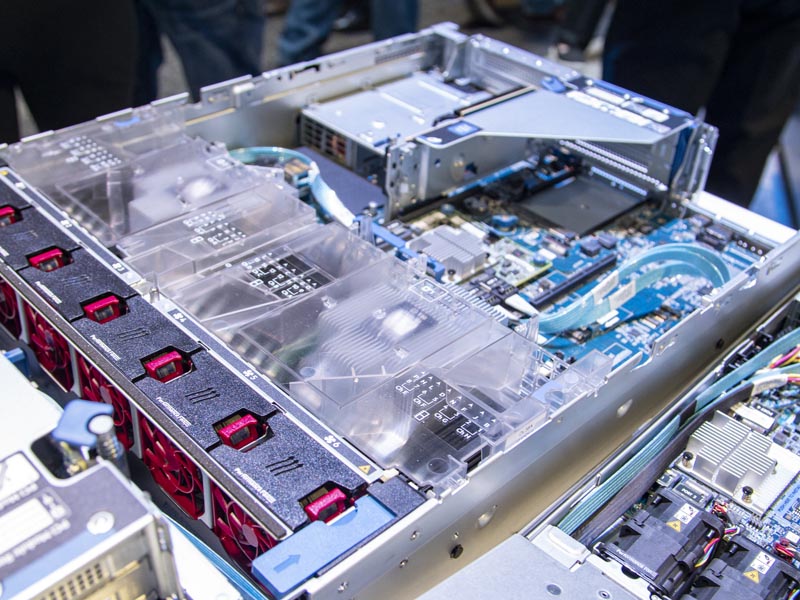
One can see that the HPE ProLiant DL385 Gen10 Plus is not fully configured here, but one gets other features such as the ability to put PCIe Gen4 expansion slots over the power supplies. HPE is touting both Gen10 Plus systems as full PCIe Gen4 servers where many competitive servers are only PCIe Gen4 to some devices.
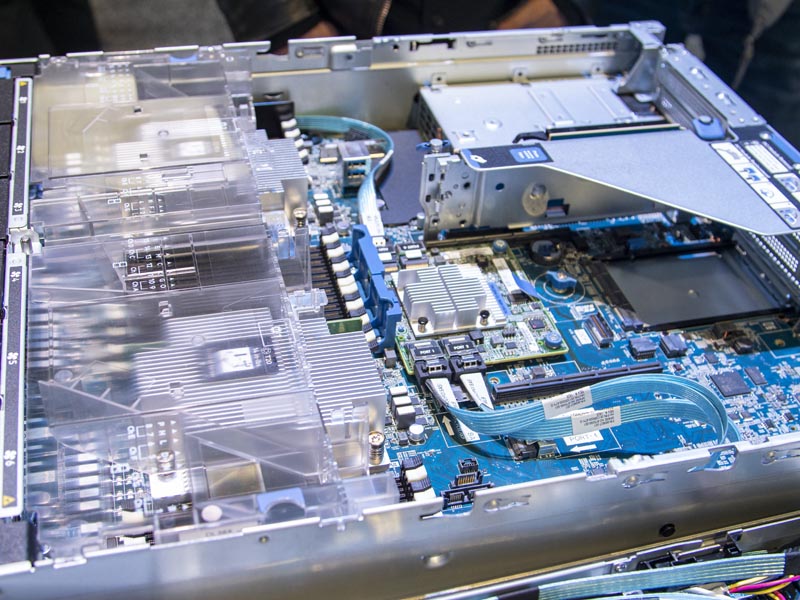
Perhaps the biggest change, is in the networking LOM. Instead of a traditional PCIe Gen3-based HPE FlexLOM that has been around for generations, HPE has moved to a new slot for the ProLiant Gen10 Plus servers. What one can see here is a PCIe Gen4 based OCP 3.0 NIC slot. This both allows for 100GbE (and faster) configurations as well as access to a broad ecosystem of NICs. With the hyper-scale and many manufacturers adopting OCP 3.0 NIC designs, this is going to be the go-to form factor in the PCIe Gen4 era. The ProLiant DL325 Gen10 Plus also includes this NIC slot.
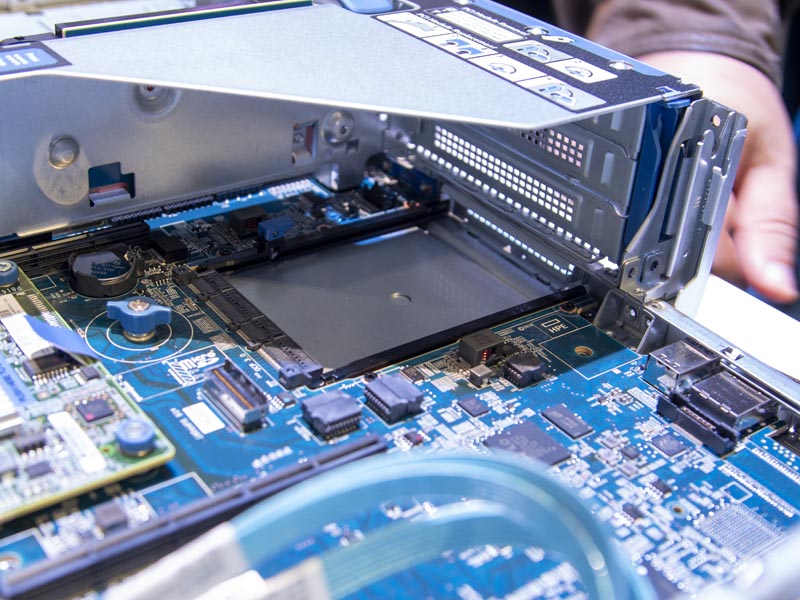
Overall, the HPE ProLiant DL385 Gen10 Plus is a complete overhaul of the DL385 Gen10 platform just like the DL325 Gen10 v. Gen10 Plus. HPE is clearly shooting for class-leading features along with having something that is all-around better than its Gen10 Xeon Scalable servers with the Gen10 Plus offerings.
Final Words
HPE made a smart move by naming these Gen10 Plus instead of simply Gen10. Realistically, they are more of Gen11 servers in many regards, but since Intel will not ship Ice Lake Xeons until the second half of 2020, HPE likely did not want to move the AMD platform fully to Gen11 (e.g. with a new iLO revision.)
Make no mistake: assuming the new drive configurations meet your needs, the HPE ProLiant DL325 Gen10 Plus and ProLiant DL385 Gen10 Plus are now almost a full generation ahead (or more) than their Intel Xeon Gen10 non-Plus counterparts. The former versions of the platforms, both of which STH has in its lab, are likely still to be sold as lower-cost platforms. While the new AMD EPYC 7002 series offers new features like PCIe Gen4, it also incurs additional motherboard and system production costs. When AMD EPYC 7001 chips were close to contemporary Intel Xeon Scalable in terms of performance, cost optimization was a key priority. Now that the AMD EPYC 7002 series has clear per-socket leadership, and by a large margin, the relatively small additional costs to build a more robust platform are justified.
We also wanted to quickly applaud HPE on the OCP 3.0 NIC. FlexLOM was great for some organizations, but moving to an open PCIe Gen4 NIC standard is extraordinarily forward-thinking. We expect many in the market to respond favorably to this change as it will enable an enormous networking ecosystem to ProLiant Gen10 Plus servers.
Expect more in December 2019 when these servers are expected to start shipping.

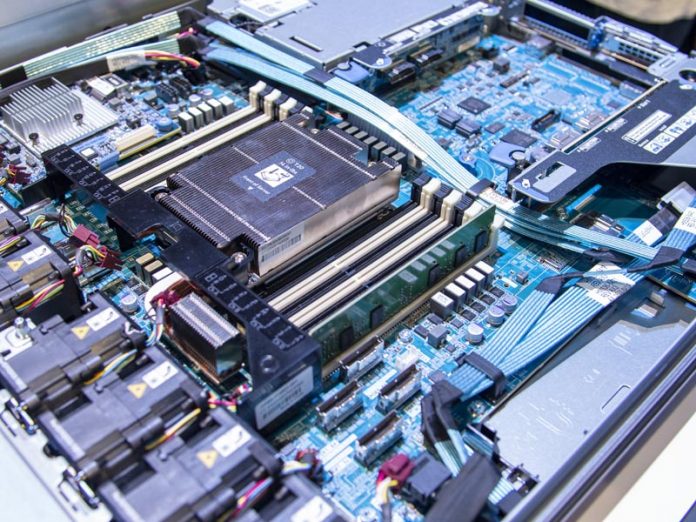



The adoption of an OCP slot is a fantastic change from the LOM approach, allowing for greater flexibility in networking choices.
I look forward to reviewing the drive slot and expansion risers options which these models will support (details not currently available on HPE site)
DL325 Gen10 Plus looks very interesting. OCP 3.0 is great.
What’s the maximum number of regular PCIe Gen4 x16 and x8 slots it may have (with optional riser if necessary)?
Any NVMe drive option(s) or only SAS/SATA?
We want to use the DL385 Gen10+ for our new vmware vsan cluster. We already got a quote with brand new NVMe SSDs, which appear to be PCI Gen4 drives. Unfortunately, the are not yet on the vmware hcl list.
Do you have any insights, if and when those drives appear on the list? Part-# are P16499-B21 (cache) and P16503-B21 (capacity)?
@Igor: If you havent already seen. The DL325 does support up to 24 NVMe drive. https://buy.hpe.com/us/en/servers/rack-servers/proliant-dl300-servers/proliant-dl325-server/hpe-proliant-dl325-gen10-plus-server/p/1012189109